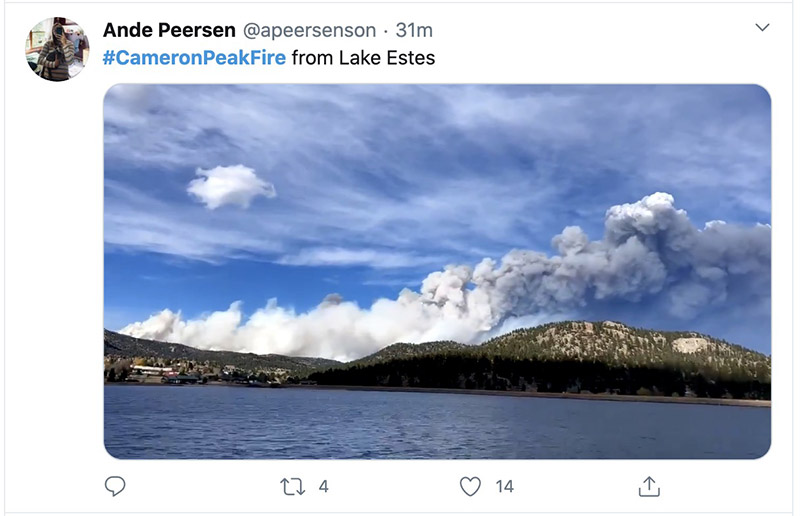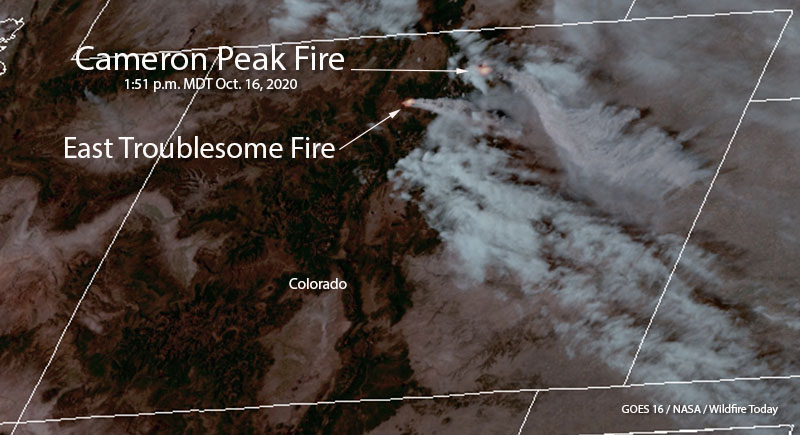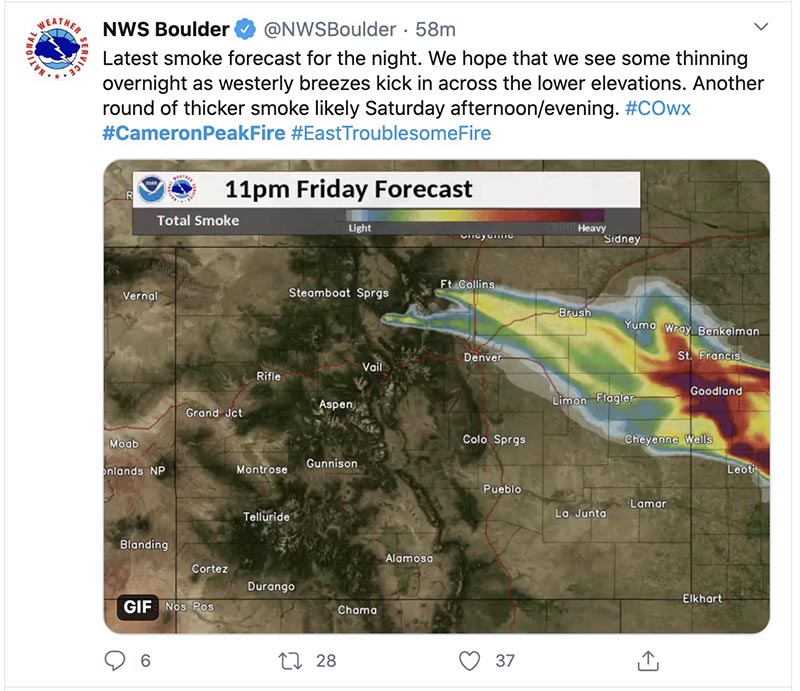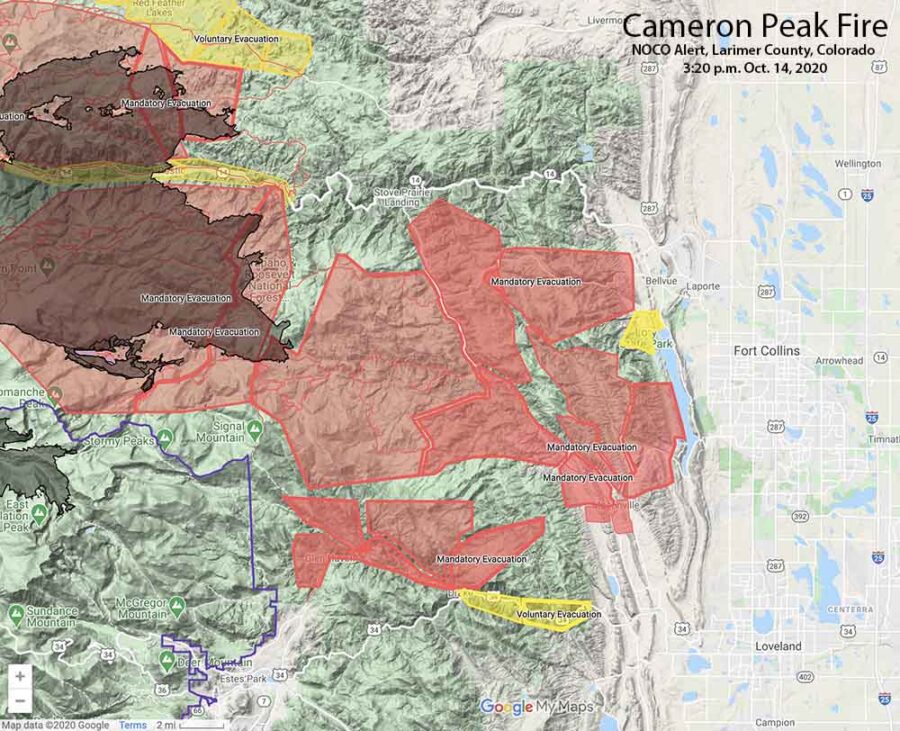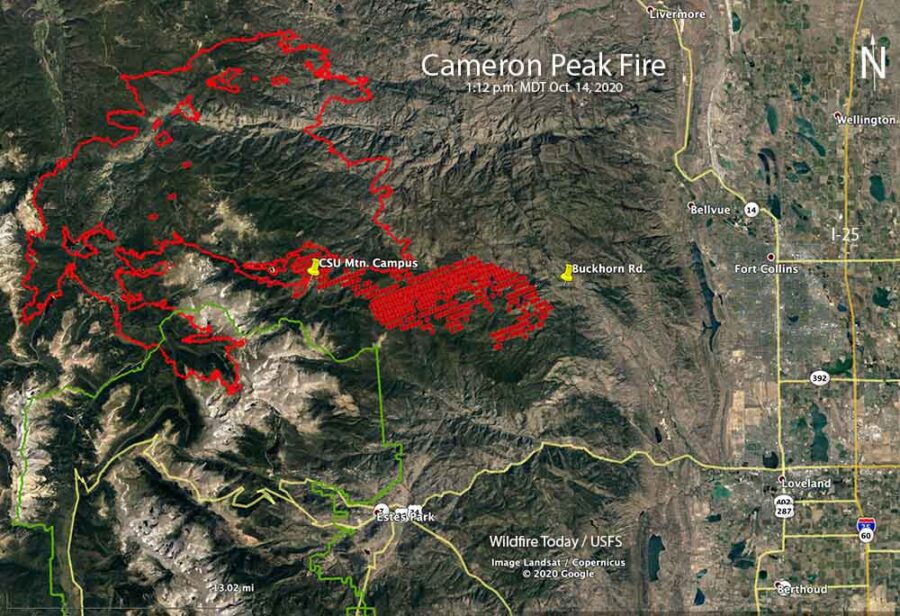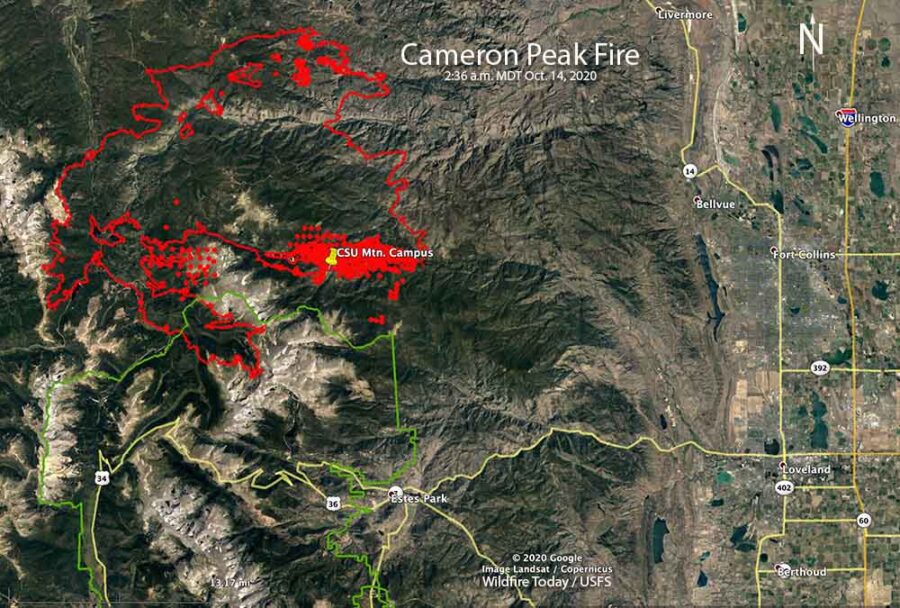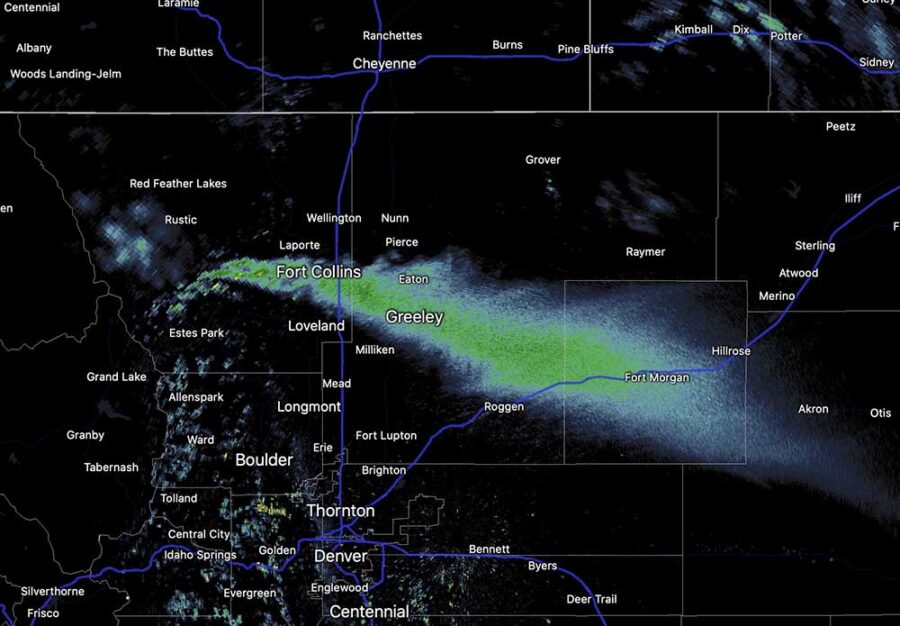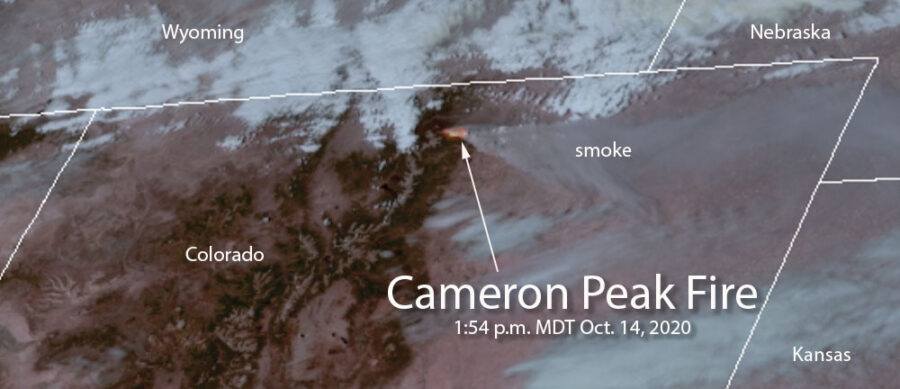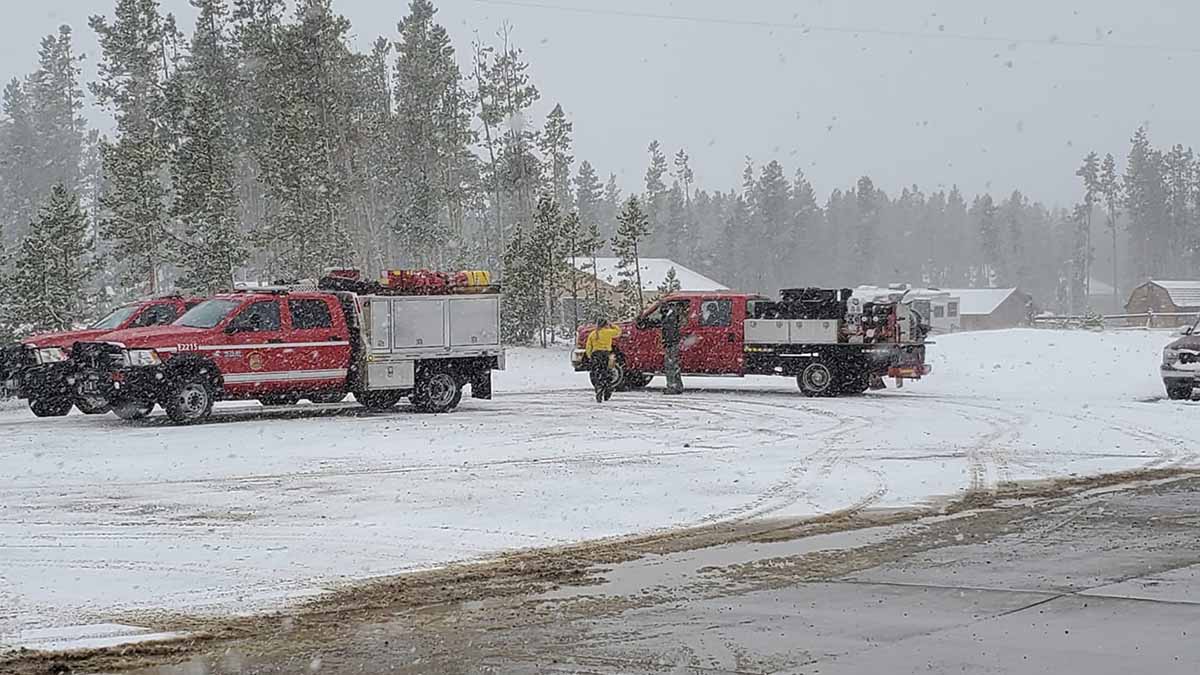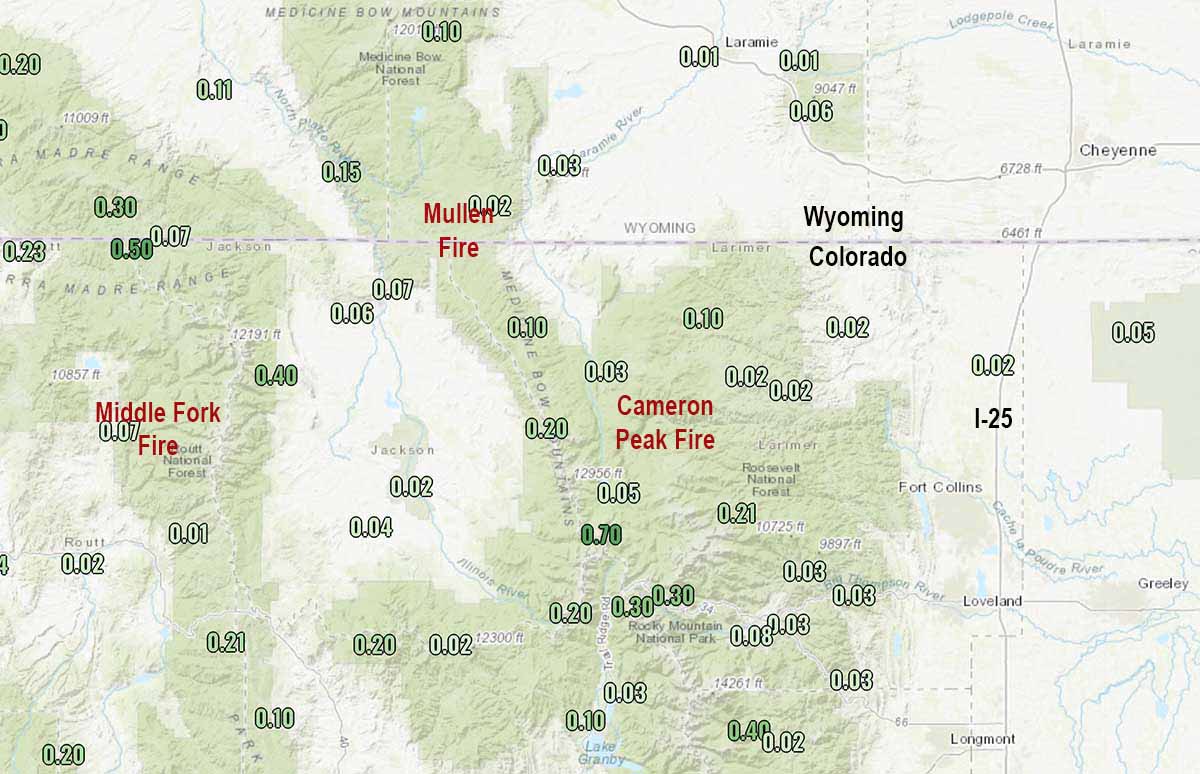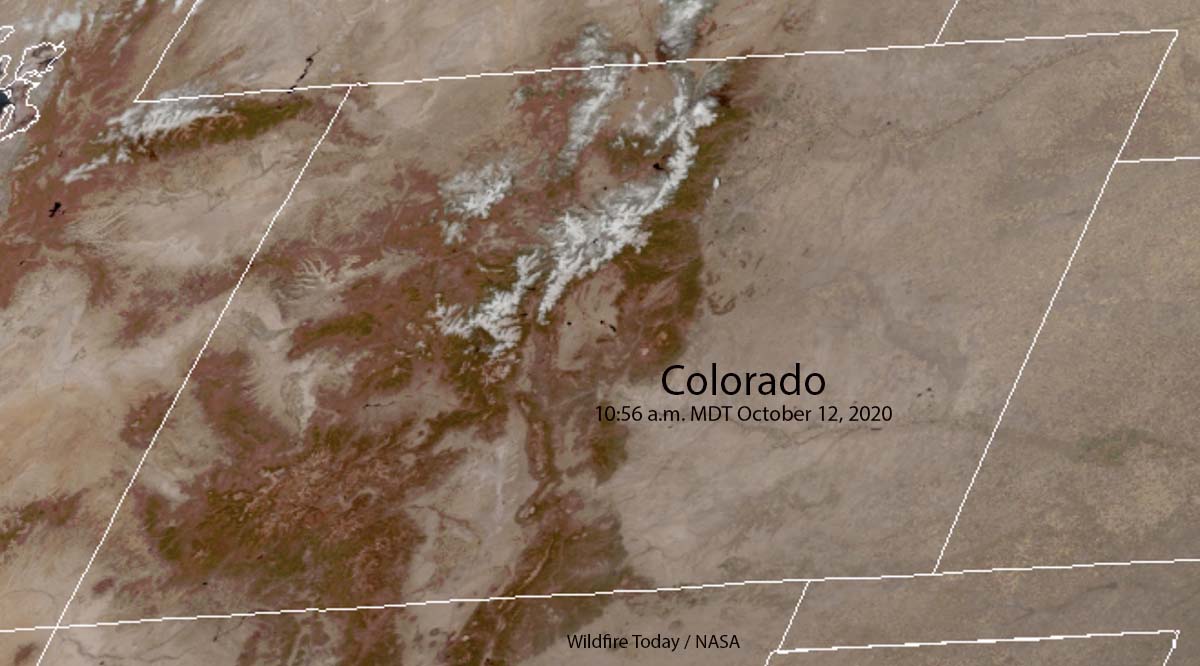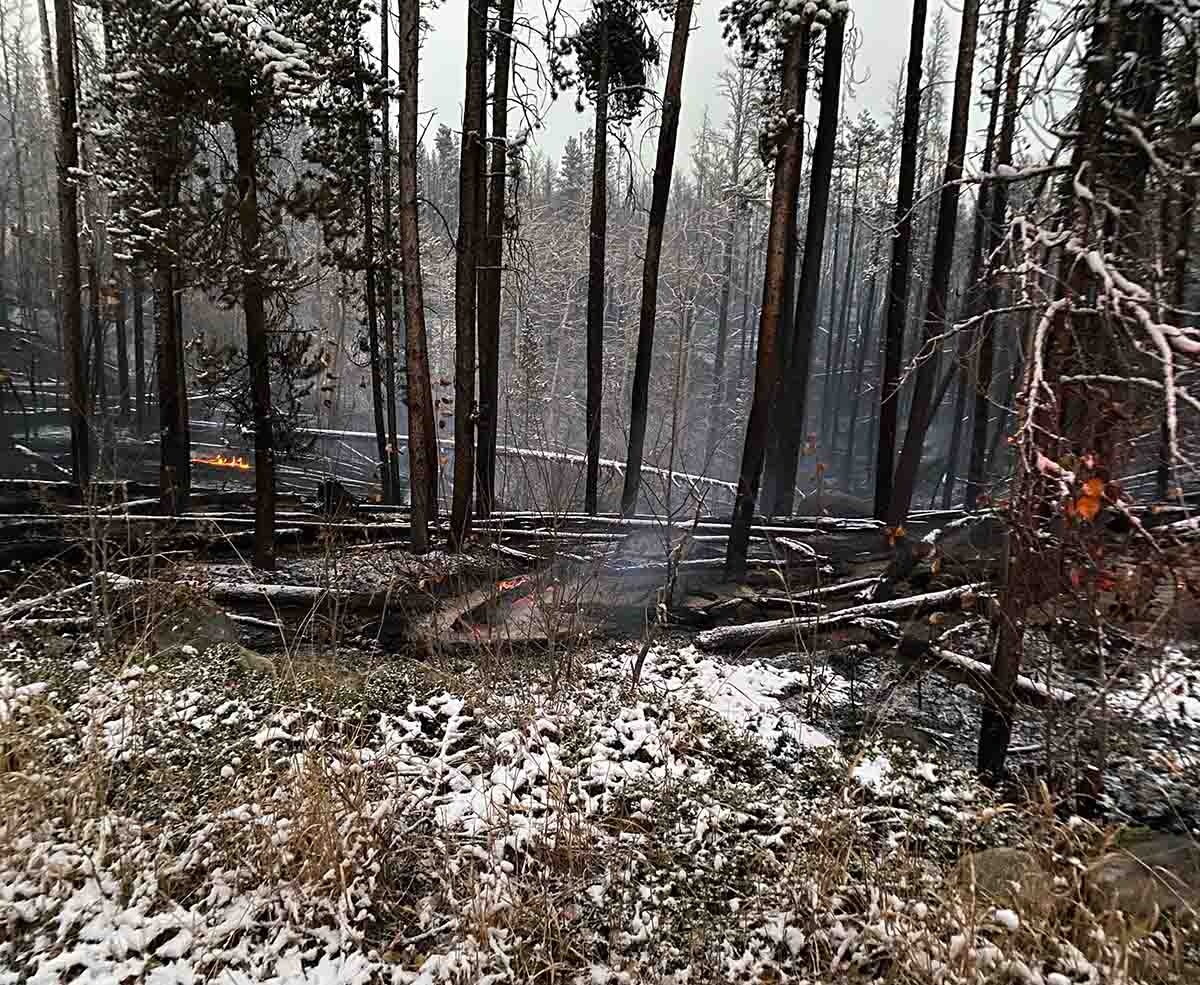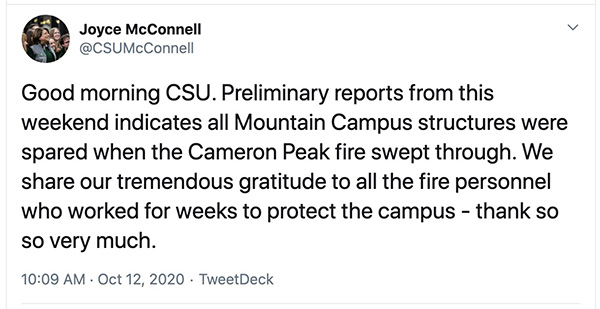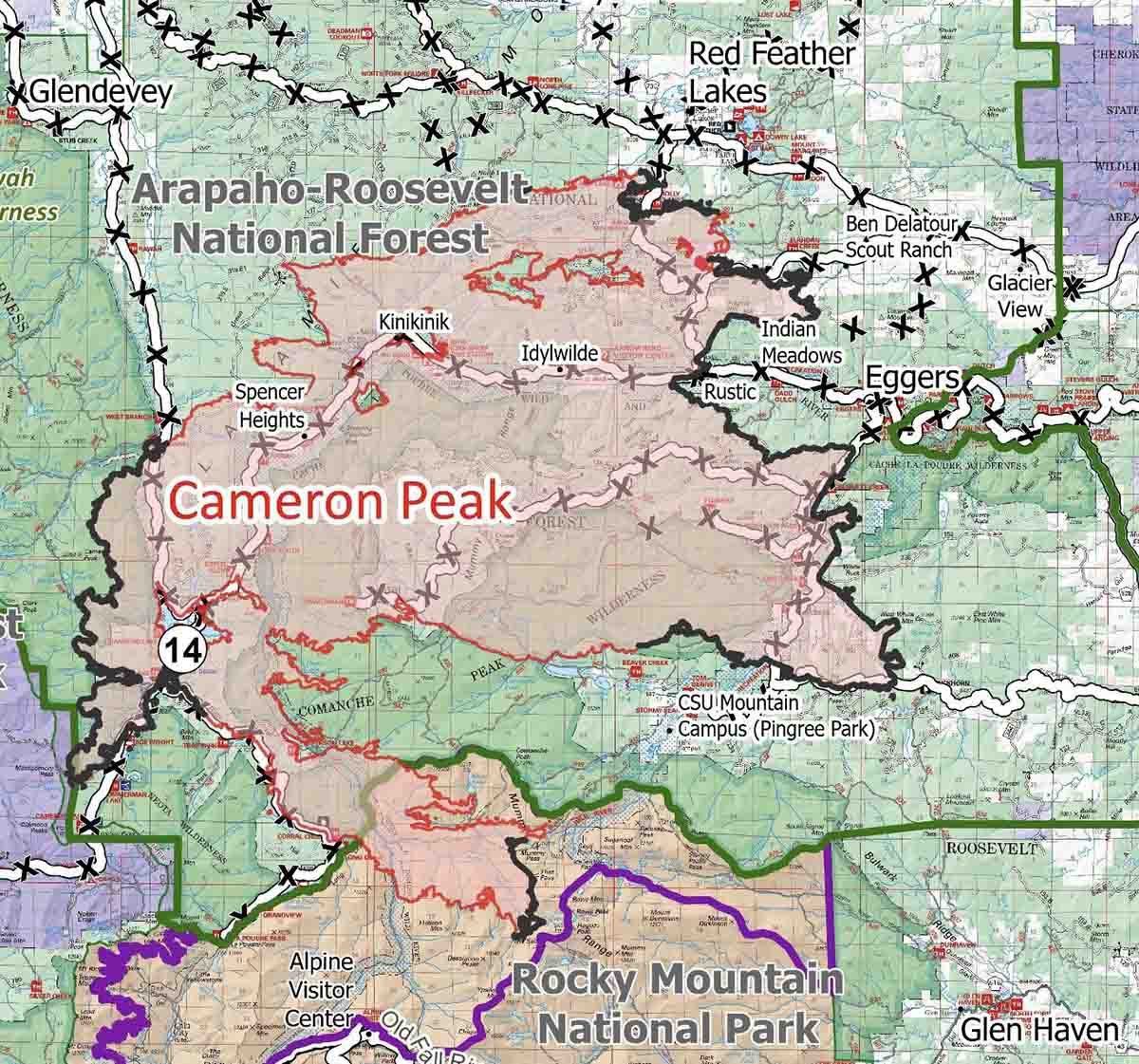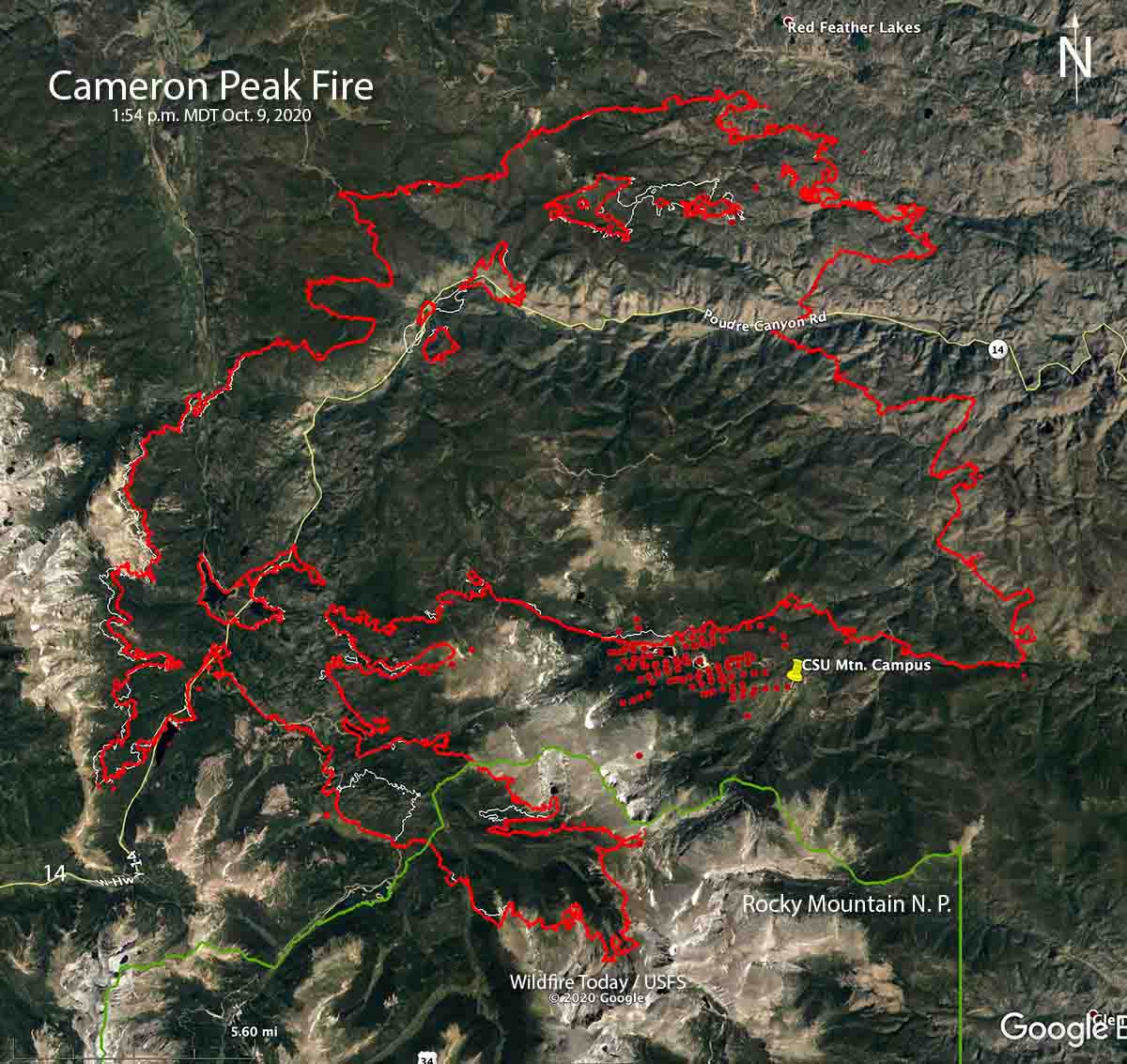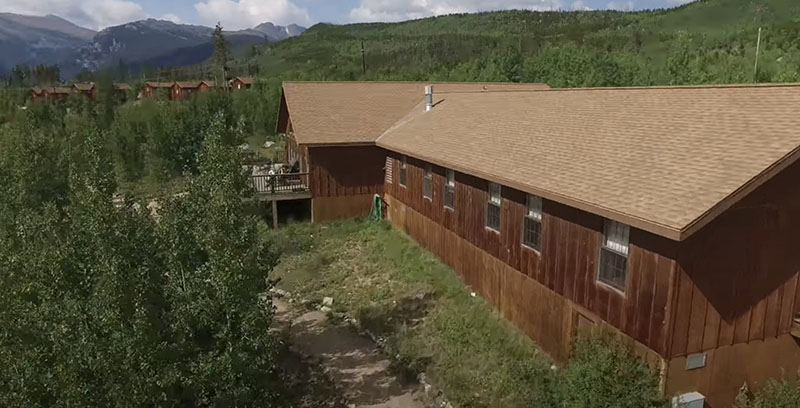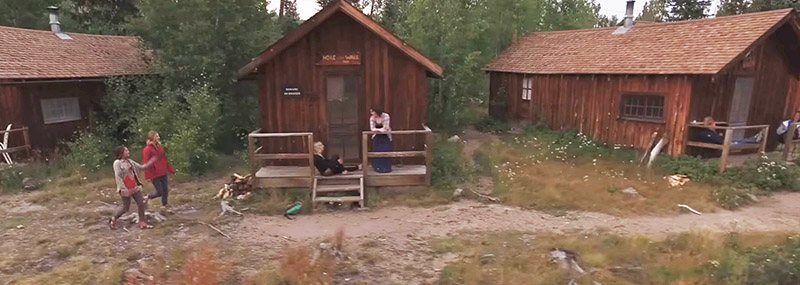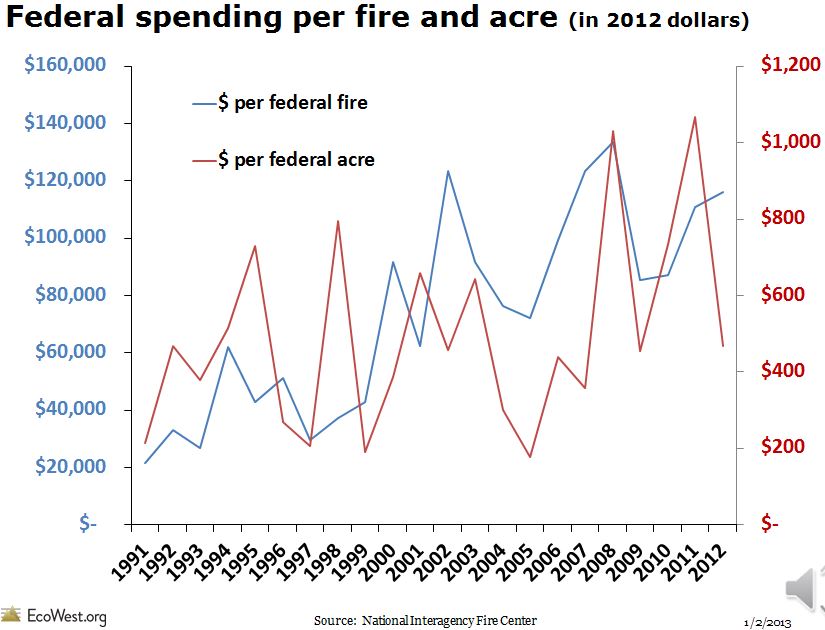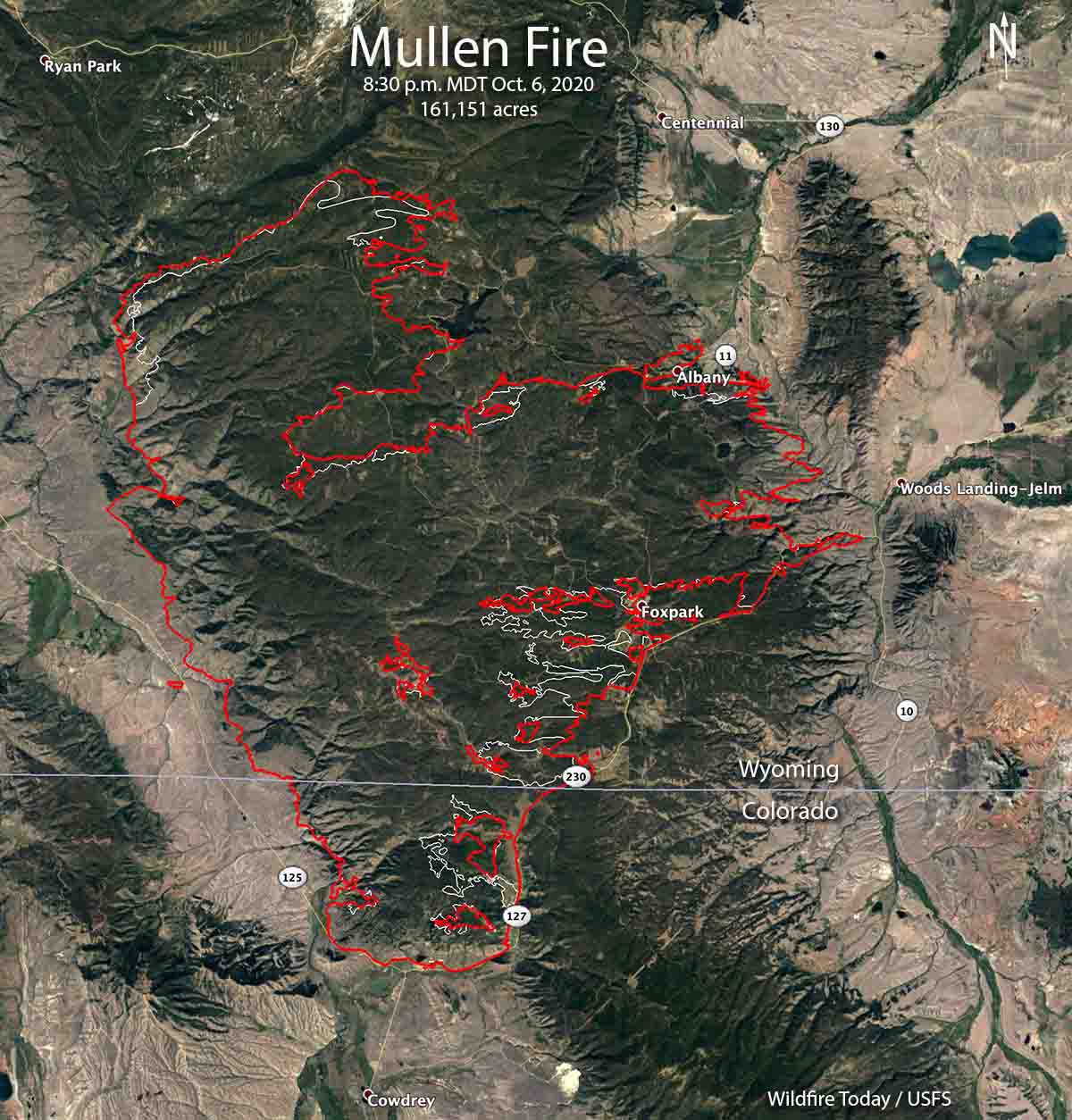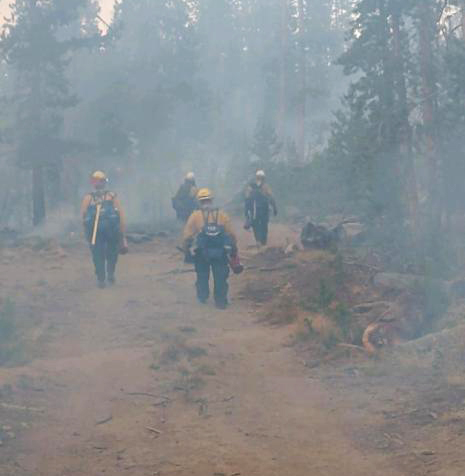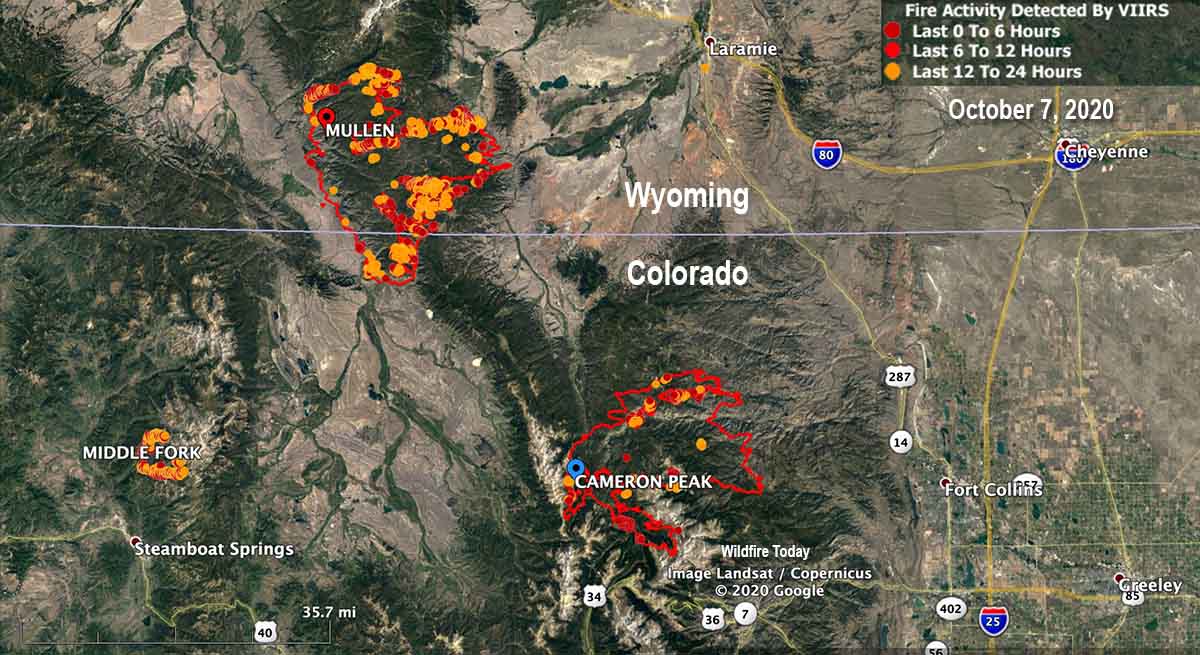Updated October 18, 2020 | 7:52 a.m. MDT
The map above shows the perimeter of the Cameron Peak Fire collected by a USFS fixed wing aircraft at 9:47 p.m. MDT Oct. 17, 2020. The red shaded areas represent intense heat. Processed by Wildfire Today. The preliminary mapped size was 203,251 acres, a number that may be fine-tuned later.
Updated October 17, 2020 | 12:50 p.m. MDT
We are trying something new on Wildfire Today — creating a Google Map containing the perimeter of the Cameron Peak Fire. One of the main differences from our usual maps is that you can zoom in to see more detail. But keep in mind the perimeter is the approximate location, and can rapidly change as the fire spreads. The data came, as usual, from an overnight USFS fixed wing mapping flight. Let us know your thoughts about this type of map.
Updated October 17, 2020 | 7:53 a.m. MDT

Strong winds throughout Friday night pushed the Cameron Peak Fire to the south and east. After 7 p.m. sustained wind speeds at the Colorado State University Mountain Campus weather station were from the west-southwest at 23 to 39 mph gusting at 35 to 66 mph.
Extreme fire behavior and spotting a mile ahead has been reported by firefighters. Approximately 31,220 structures are threatened.
In light of the strong winds, the incident management team ordered an additional 200 structural fire engines with associated supervisory personnel.
Since the fire started August 13, four residences and 96 other structures have been destroyed.
A fixed wing aircraft mapping flight at 10:20 p.m. Friday showed the fire edge had spread about two miles to the south over the previous 24 hours. Satellite overflights around 3 a.m. showed significant additional heat to the south, but the sensors could have been detecting heat in the smoke column, rather than fire on the ground.
The weather forecast for the east side of the fire on Saturday predicts sustained 22 to 28 mph winds out of the west-northwest gusting at 37 to 46 mph. The high temperature should be 60 degrees with 28 percent relative humidity. The wind will decrease after sunset, slowing to 3 to 5 mph out of the south or southwest by 12 p.m.
The mapping flight at 10:20 p.m. Friday estimated the size of the Cameron Peak Fire at 187,537 acres, but that figure may be fine-tuned by the incident management team, especially if they include fire spread that occurred after the flight.
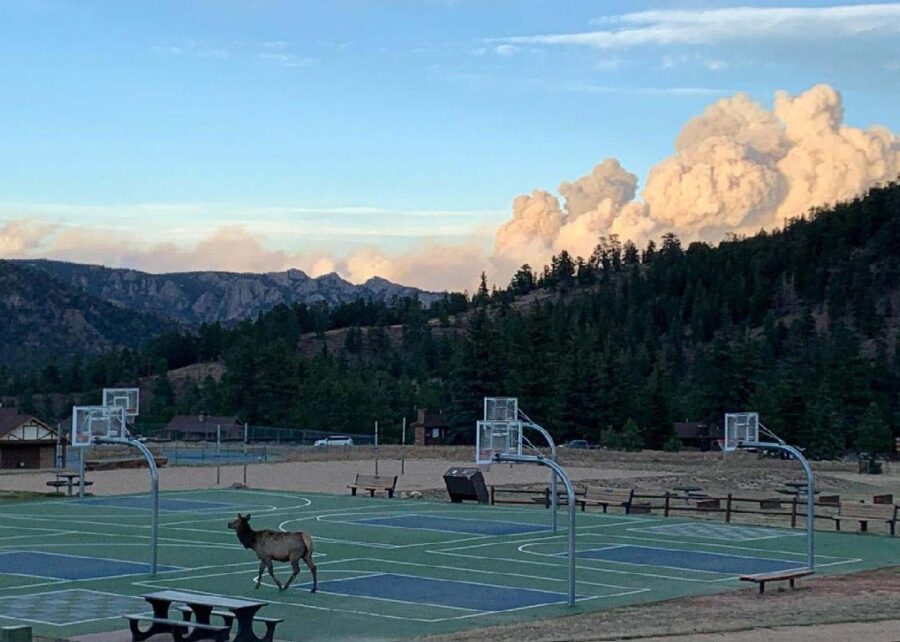
Updated October 16, 2020 | 9 p.m. MDT

The Cameron Peak Fire west of Fort Collins, Colorado has been extremely active on Friday, forcing firefighters to withdraw for their own safety from Miller Creek, The Retreat, and Storm Mountain.
Additional mandatory evacuations were ordered for Highway 34 from the Dam Store to just west of Soul Shine Road. More voluntary evacuations are also in effect. Larimer Emergency Telephone Authority (LETA) has details about the evacuations. NOCOALERT has maps of the areas.
Friday evening the incident management team reported the fire had burned 173,536 acres.

Since 1 a.m. on Friday the weather has been very favorable for rapid fire spread. Overnight a weather station at the Colorado State University Mountain Campus recorded 30 degrees, relative humidity in the mid-teens, and a 10 mph west wind gusting at 20 to 30 mph.
Conditions worsened after sunrise Friday with temperature in the 50s, humidity remaining in the mid-teens, and 10 to 30 mph southwest to west winds gusting at 22 to 48 mph. By 6 p.m. the wind had calmed a bit — 10 mph with gusts of 20 to 35 mph.
The weather forecast for the east side of the Cameron Peak Fire calls for very strong winds Friday night through 10 p.m. Saturday, 22 to 29 mph out of the west or northwest gusting at 29 to 46 mph. The high temperature will be in the low 60s Saturday and around 50 Sunday. The relative humidity will be around 30 percent Saturday and in the high 40s Sunday. These conditions could be favorable to additional spread of the fire to the east Friday night and Saturday.
Breezy conditions take over Sunday at noon through Tuesday with 8 to 10 mph winds out of the west gusting at 17 to 22 mph. The minimum humidity will be around 40 percent.
